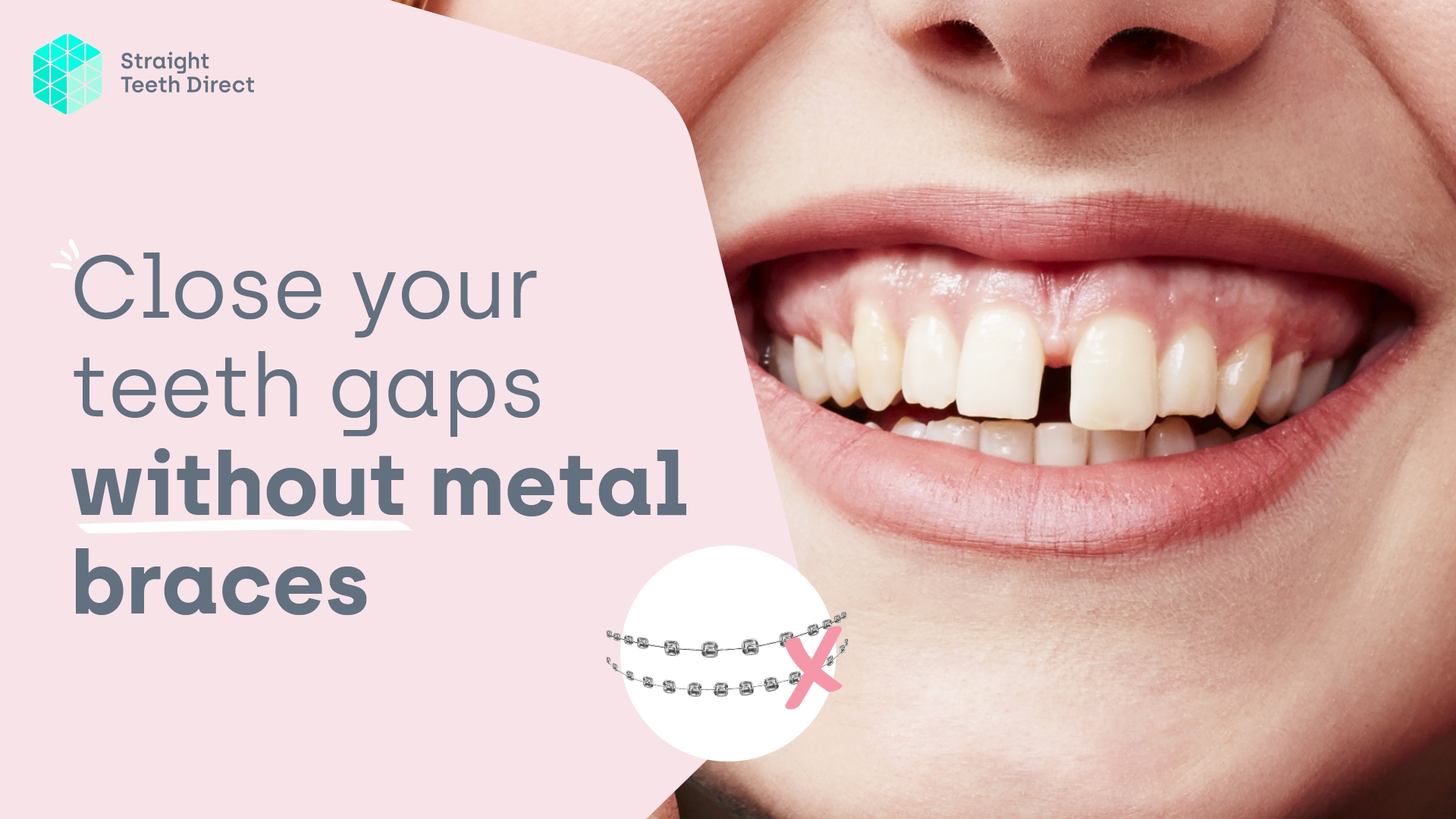
Can teeth gaps be closed without braces

Are you conscious of the gaps between your teeth? Gappy teeth are quite common, but sometimes they can become a bit of a bother. Maybe you don’t like the look of them or find that food gets trapped, causing issues with your gums. Fortunately, that gap doesn’t have to be permanent. There are several treatments available for “gappy teeth” and fixing them carries both aesthetic and health benefits for your smile.
Why do you have teeth gaps?
A “diastema” is a gap between two teeth. These teeth gaps tend to appear between the two upper front teeth, but gaps can occur between any two teeth and there are several reasons why someone may have gappy teeth.
What causes gaps between teeth?
- A mismatch between the size of the jaw bones and the size of the teeth. If your jawbone is too large and your teeth too small, you may experience extra space between teeth.
- Missing or undersized teeth can cause neighbouring teeth to move and attempt to help close one gap. This movement can create new gaps between teeth.
- An oversized labial frenum (the piece of tissue extending from the inside of your upper lip to the gums) can create a gap. Sometimes, it can grow too large and pass between the two front teeth, blocking the natural closure of the space between these teeth.
- Bad habits like thumb sucking can pull the front teeth forward and create gaps.
- Spaces can develop due to an improper swallowing reflex. When you swallow, your tongue should press against the roof of your mouth, but some people push their tongue forward against their front teeth. This pressure will cause teeth to move, creating a gap between front teeth.
- Gum disease causes your jawbone to weaken and recede. As the jawbone supports your teeth, losing bone can cause them to become loose and move.
Even if your teeth gaps don’t bother you from an aesthetic point of view, it’s important to get the diastema checked by a dentist in case a more serious condition like gum disease is the cause. Gaps in your teeth could also mean you have an improper bite, which can lead to chipped or broken teeth.
Quick fact on gaps in front teeth
Midline diastema – or gap between front teeth – is considered to be the most common of all. Some children may have space between teeth, however it often closes after their primary teeth fall. More than 95% of 6-year-old children have midline diastema and after their permanent teeth fully erupt, the percentage of diastema decreases to less than 50%. Only 7% of teenagers between 12 and 18 years of age have midline diastema. It is then safe to say that midline diastema decreases with age.
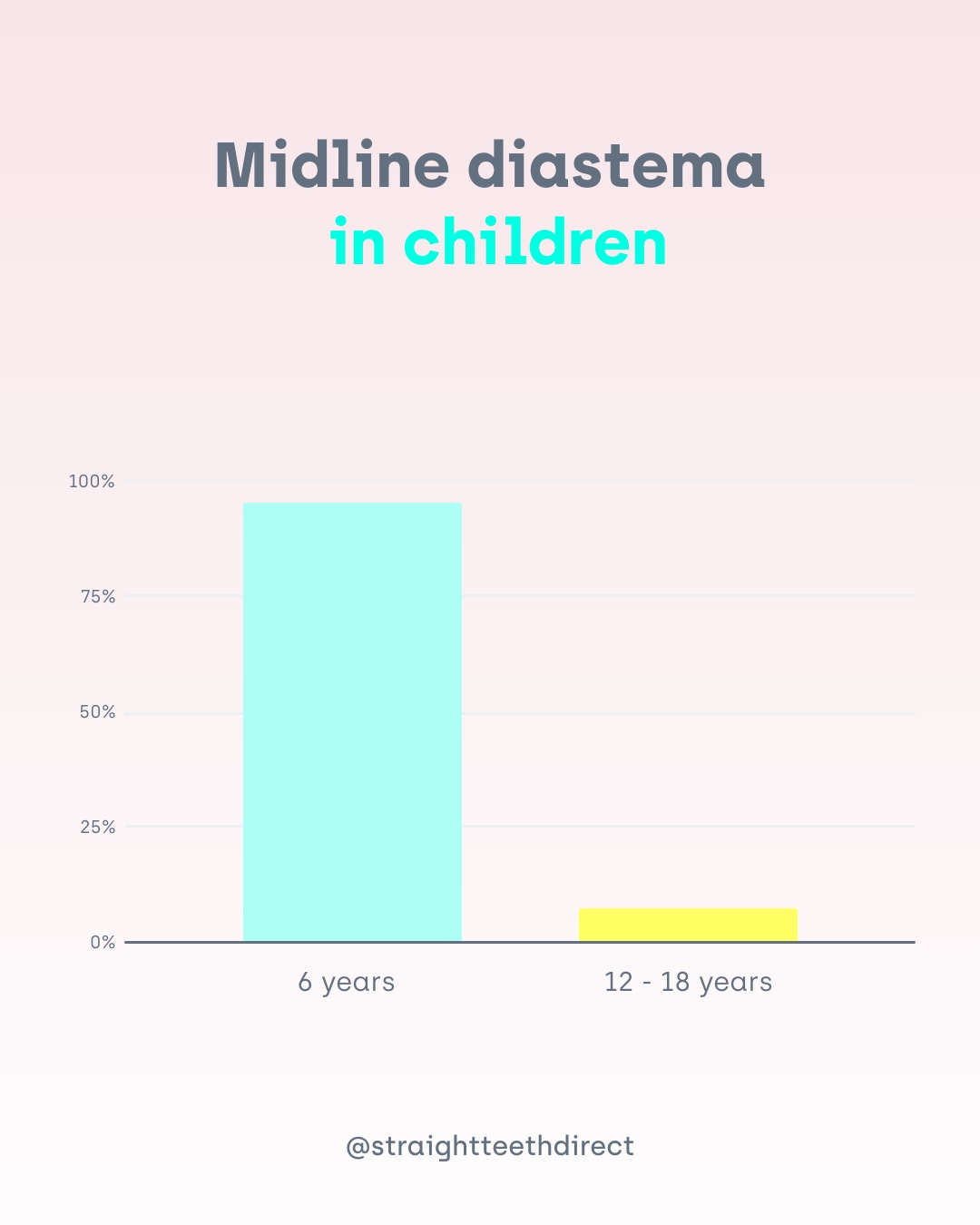
How to close teeth gaps
-
Closing gaps with dental Bonding
Dental bonding, or cosmetic bonding, is the easiest, quickest, and most economical way to fix a gap between teeth. This is the same procedure you would have experienced if you ever chipped part of a tooth and had it fixed. A dentist applies a tooth coloured resin to your teeth and shaped to match their natural look. Then, it is hardened with a UV light, which “bonds” it and closes the gap. Bonding usually only takes one office visit and there is no need to remove any natural enamel, which means that the process can be reversed if required. However, it also means that teeth bonding for gaps is not a permanent solution and requires maintenance, as it will wear off over time due to impacts from eating and brushing.
-
Closing gaps with veneers
Porcelain veneers are another cosmetic approach to fixing gaps in between front teeth. They require more work and planning than dental bonding, but the procedure is still relatively simple and the results last for many years.
A veneer is a thin piece of porcelain that has been shaped in a lab to match the shape and colour of your teeth. Like a mask, it is placed and bonded over the front of your tooth, covering up any imperfections or gaps in your teeth. Once bonded, the thin piece of porcelain becomes very sturdy and difficult to break.
Veneers look great and are long lasting if done properly, but it’s important to know that the process is irreversible. In order to create surface space for the veneers to be attached to, a thin and sometimes substantial layer of enamel needs to be removed from the front of your teeth. Without that enamel, your teeth require veneers for protection, as they would otherwise become exposed and painfully sensitive. Veneers can correct many cosmetic issues, but depending on the cause of the gaps in your teeth, orthodontics might be required.
-
Fixing gaps with orthodontics
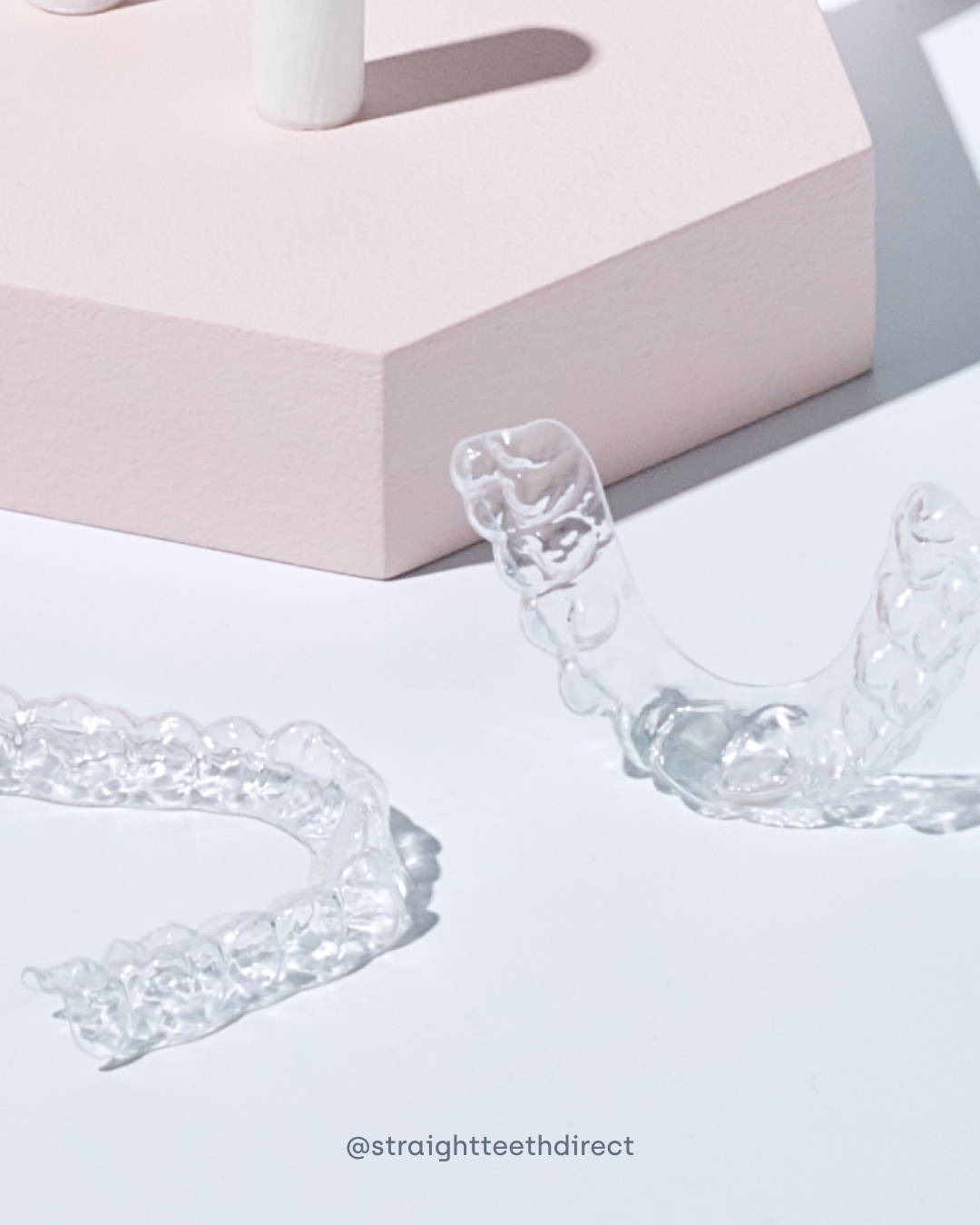
For more severe cases of teeth gaps, an orthodontic approach may be the best solution. It’s not as simple as it may seem: only moving the front two teeth together would create gaps either side of them, and so on, which is why braces or invisible aligners would be required to correct your arch, or the position of all your visible teeth.
Out of the two options, invisible aligners are very often the easiest, most pain-free and affordable option to close gaps. By adjusting the shape and size of your dental arches, the teeth are moved into their ideal alignment, closing the gap. Because the dental aligners are made from durable yet flexible plastic, they can be removed and cleaned, leading to a healthier smile than when fixed braces are used.
Does orthodontic treatment takes longer than bonding or veneers?
Even though orthodontic treatment takes longer than dental bonding or veneers, it is an effective and long lasting solution. The bonding material can discolour and become weaker over the years, starting to break away, while veneers require the destruction of your natural protective enamel and can come at great financial cost.
Invisible aligners have become much more cost and time efficient than other methods, and you can even save up to 70% on the clinic price or other orthodontic procedures if you choose an at-home solution. Thanks to innovative advances in teledentistry, this method also cuts out the hassle of having to make dentist appointments, giving you your most naturally straight smile at a fraction of the clinic cost.
Check our YouTube video for examples of teeth gaps closed with clear aligners:
Four teeth gaps scenarios and solutions
-
There is a gap between your side teeth and front teeth only
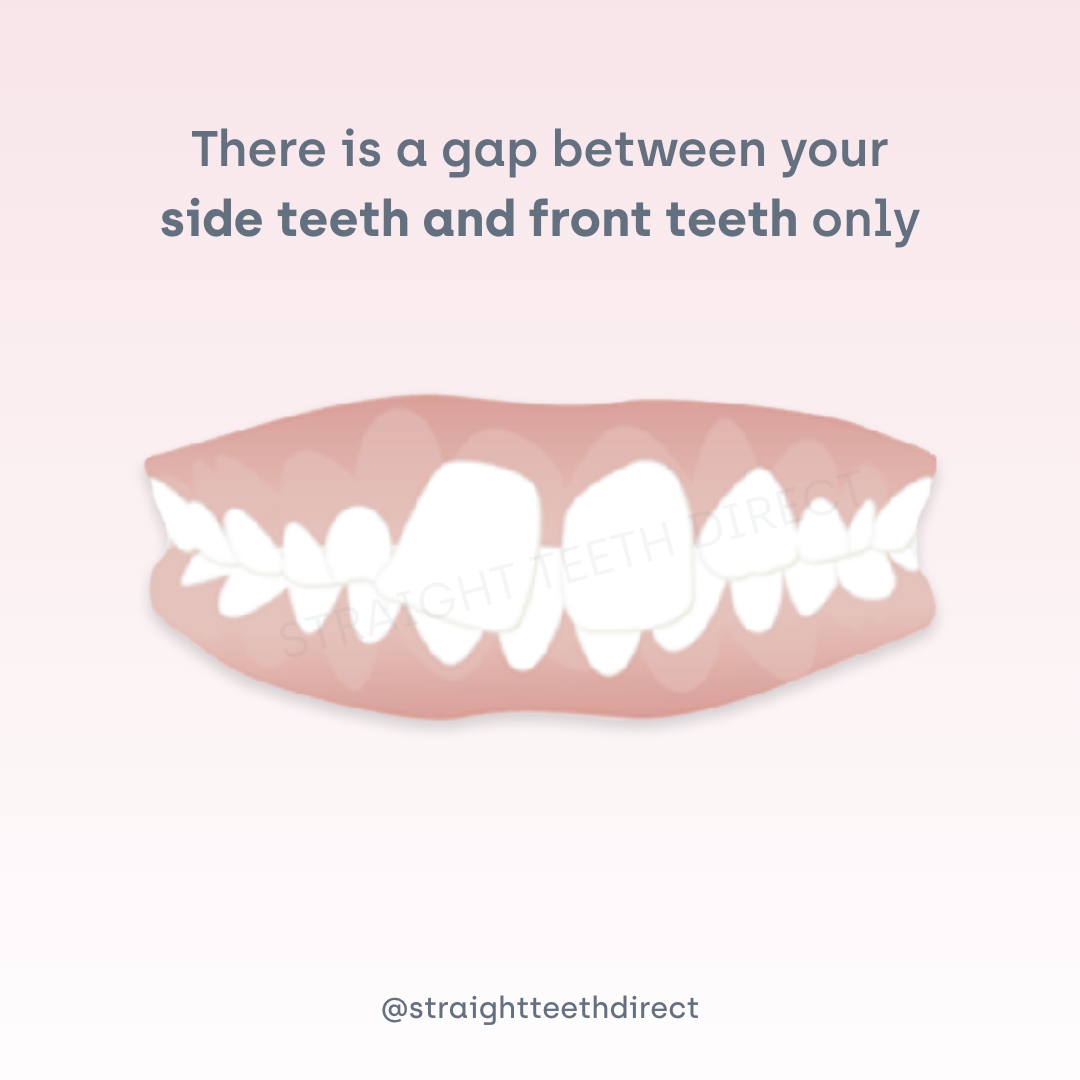
The most common small teeth are the lateral incisors (the upper side front teeth), these are normally rectangular but sometimes “peg shaped” and very skinny.
In this situation the best solution is to restore them to their proper size, which will rebalance the proportions of your smile. This is best done using cosmetic bonding and can be done in as little as 30 minutes by a dentist. In some situations you may be better off having them straightened first with aligners and then bonded, but it varies case by case.
-
There is a gap around your canines on one side
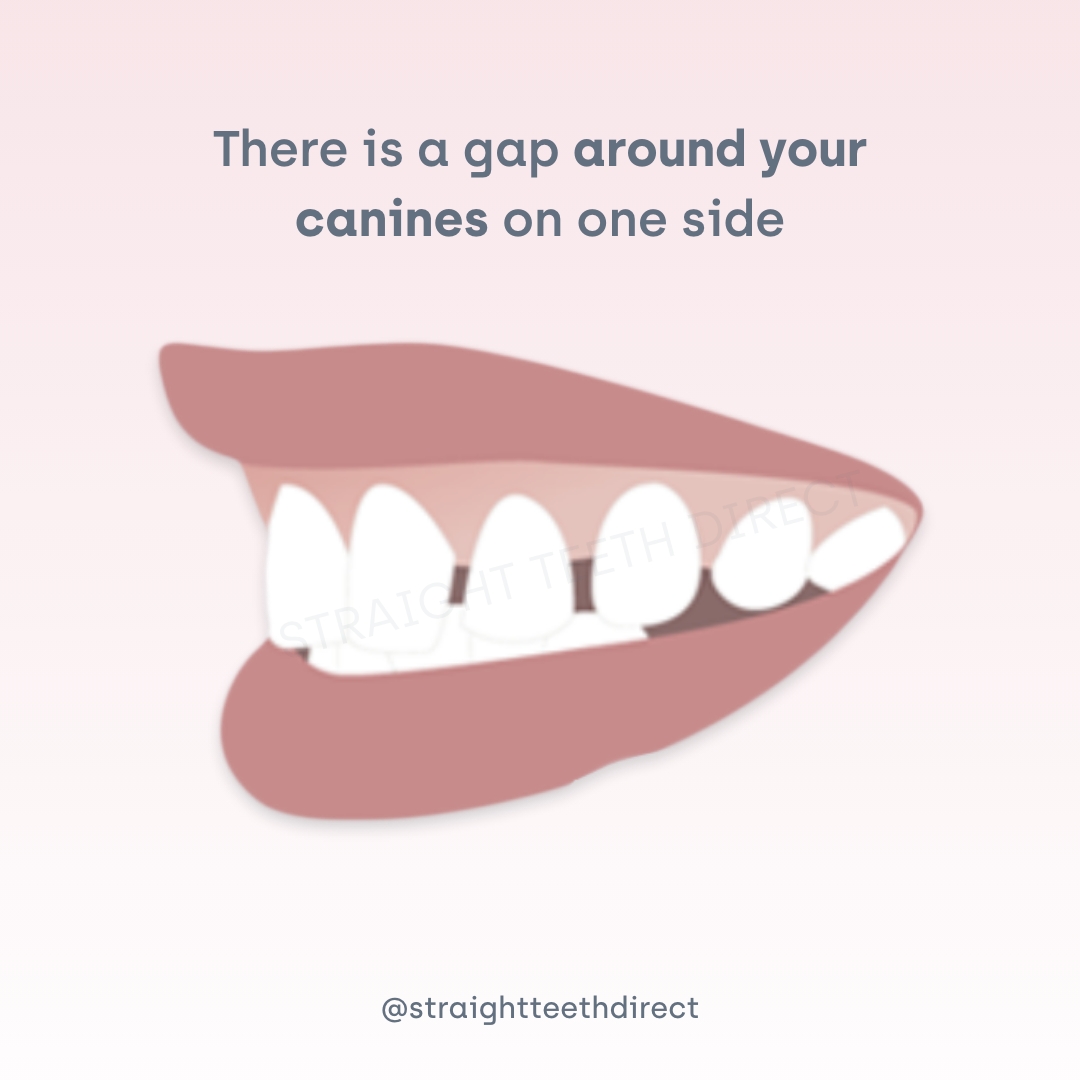
Many people are permanently missing an adult canine tooth. This while their baby canine remains in place, too small to fill the gaps either side of it. If the adult canine is in too complex a place to bring into position, the best solution is often the same as above. Bonding/restoring the baby tooth will make it look bigger. The other teeth may need to be straightened first, but this needs to be done carefully under supervision. The reason for this is that baby teeth have comparatively tiny roots and are at risk of coming loose.
-
There is a gap between the front teeth
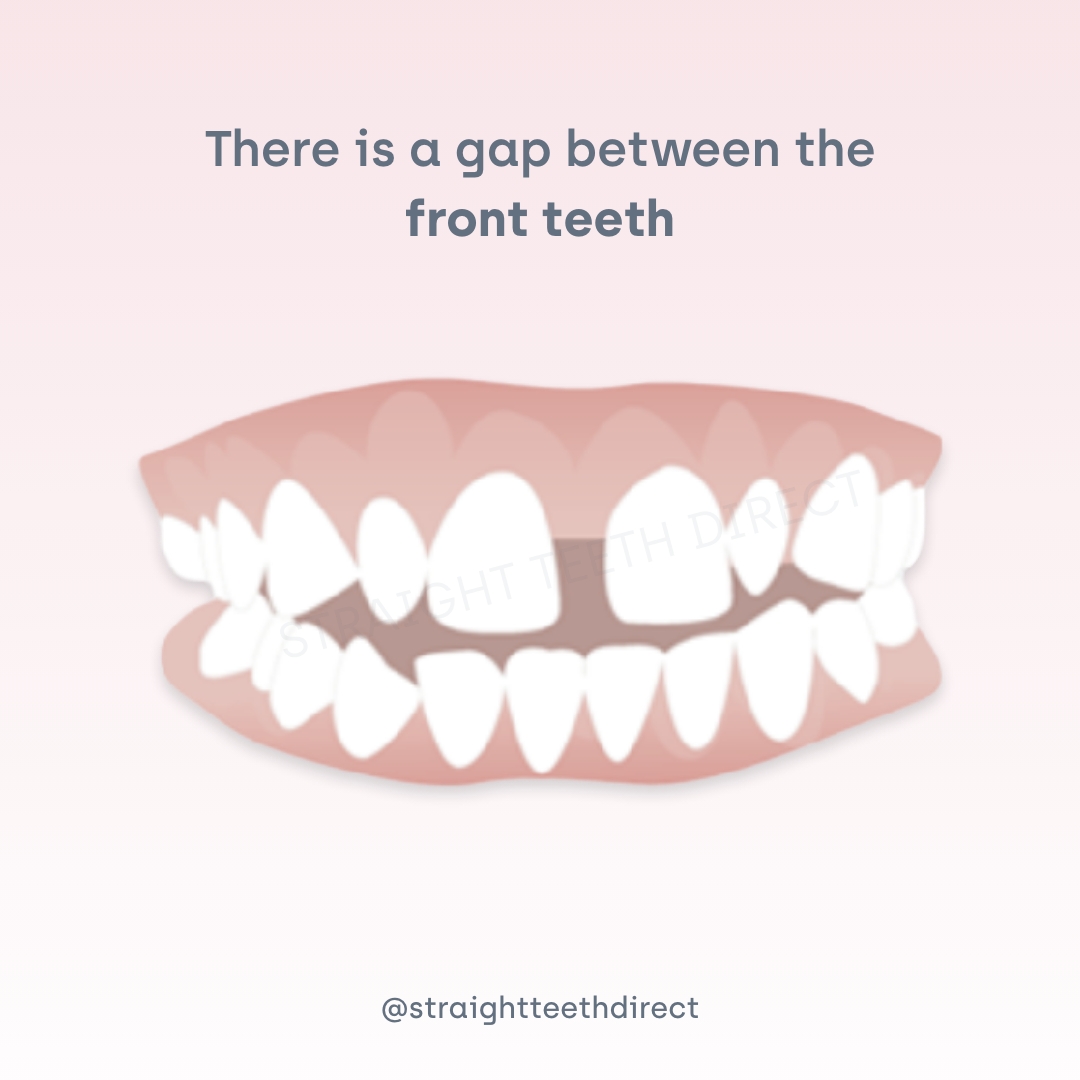
This is very common and has many causes. If the front two teeth are very small, then the solution can be to bond them to improve their size before aligning them to be closer together.
The gap could also be caused by a small piece of gum/flesh between the teeth called a frenum. This stops the teeth moving together and sometimes needs to be removed. Often, aligners can help move the teeth together to close the space, which is then held closed using retainers. Clear aligners close teeth gaps by exerting pressure on the teeth to move them together. They are a great alternative to improve your smile without having to use ugly elastic bands and metal train tracks. (See below for more details on clear aligners!)
-
There are gaps between all your teeth
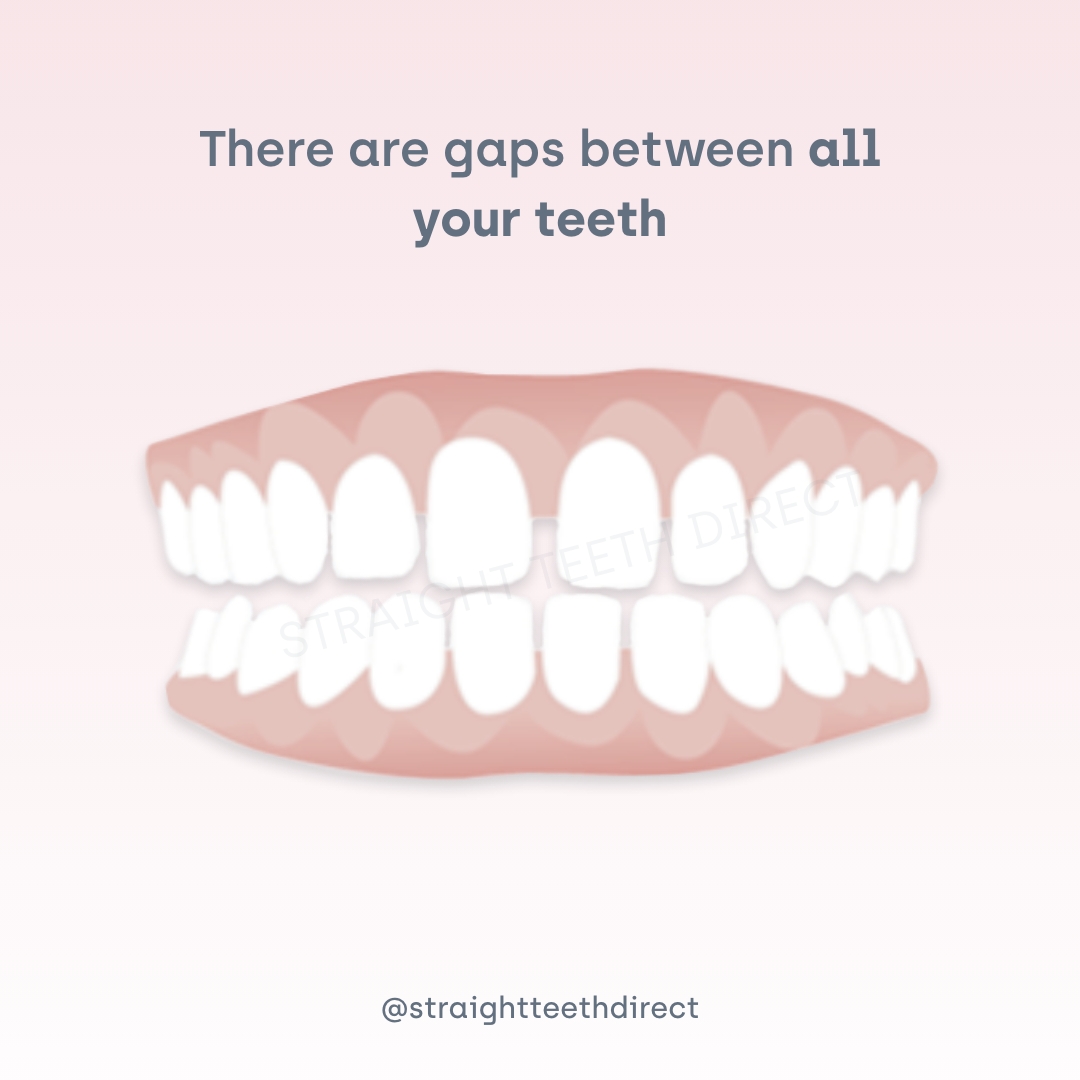
If your teeth are too small in relation to your jaw, then gaps can appear between all of them. In this case, using invisible aligners or other orthodontic procedures to adjust the shape of your dental arch and close the gaps would be an ideal solution.
In some situations, there are bigger gaps between your top teeth compared to the bottom. This means that some spaces will need to be left at the top or towards the back. The reason for this is your bite. If your dental arch is adjusted so that all upper teeth gaps are closed, your top teeth could possibly go behind your lower teeth, distorting your bite, which is to be avoided. Here, a combination of aligner treatment with subsequent cosmetic bonding might be the solution to opt for.
Are there any teeth gaps too severe for at-home invisible aligners?
There are a few factors a dentist or orthodontist needs to consider when planning to close teeth gaps. Size and number of gaps between your teeth can determine whether invisible aligners at-home can fix your individual smile issues or not.
If you’re missing a tooth, other options may be necessary. If your gaps exceed 6mm, you may also consider other options. We do recommend you first complete our free e-consultation in order to understand if you are suitable. If you are not suitable, then you may want to get assessed by a professional dentist before choosing invisible aligners.
Every case is specific to each person’s own needs. Adding up to this you may have additional dental issues that will lead to other teeth straightening treatment options. That’s why it is so important to get professionally examined before starting any kind of treatment!
Teeth gap FAQs
-
Can teeth gaps close naturally?
It is very common for children to have gaps between teeth. When children are young and growing, their jaw size increases so gaps can appear as new teeth come through, small gaps may then close naturally.
Bear in mind that this is not a golden rule. Some gaps may not close naturally, thus the need for an orthodontic treatment.
- Should I keep my tooth gap?
It all comes down to the aesthetics of your smile and how you feel about it!
There is usually no reason to get rid of a gap in your teeth for health reasons. However, it is better to get a proper evaluation as gaps may still cause gum or teeth issues! In some cases, when the gap is too small, food can get trapped there…threatening your dental health.
- How fast do braces close gaps?
Not all cases are the same, the duration of the treatment is user specific and it will depend on the size of the gaps. As a rule of thumb, traditional braces can take from 6 months to 1 year to close the gaps. Invisible aligners can take as little as 5 to 9 months, always depending on each individual user case.
- How do I get rid of a gap in my teeth?
That’s probably the most common question when it comes to teeth straightening! Some people might even ask “Can teeth gaps be closed without braces?” well…in theory yes and some have tried DIY teeth straightening. Wrapping rubber bands around their teeth to move them together, as well as other methods. This is incredibly dangerous and could lead to you requiring restorative treatment. At no cost should you seek to close teeth gaps without the supervision of a professional dentist and orthodontist.
Luckily, orthodontics has entered the 21st century. With Straight Teeth Direct™ you can now close your teeth gaps from the comfort of your own home. Always under expert supervision and at a fraction of the clinic cost. It’s the most advanced teeth straightening system on the market. Here’s how it works.
As you can see, teeth gaps are very common. There are though a number of solutions available to you that can easily close them without breaking the bank. The most important thing is to know your options and always seek professional advice.
Do you have any other questions regarding your teeth gaps? Complete your free e-consultation to get in touch with one of our dentists, who will be happy to advise you on your specific case

Still thinking about it?
Fill in your email to receiveyour free guide!


















